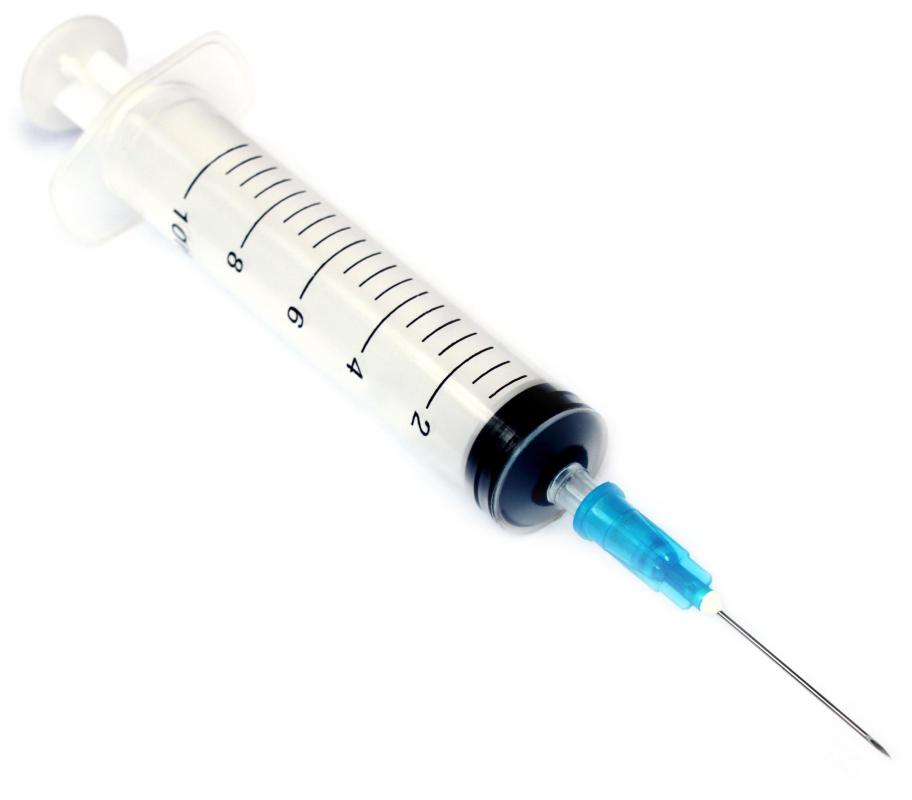At WiseGEEK, we're committed to delivering accurate, trustworthy information. Our expert-authored content is rigorously fact-checked and sourced from credible authorities. Discover how we uphold the highest standards in providing you with reliable knowledge.
What are Keloid Scars?
Keloid scars, also known as keloids, are scars which grow out of control, growing large and protruding beyond the boundaries of the original wound. Keloids can appear at any stage during wound healing, and the reasons why they form are not fully understood. Treating keloids can be difficult, as they tend to recur. It is also difficult to prevent keloid scars, with such scars occurring on wounds which are perfectly cared for along with wounds which receive indifferent treatment or neglect.
These scars look very similar to hypertrophic scars, scars which become raised and thickened. The key difference between the two types of scar overgrowth is that keloid scars go beyond the original wound, while hypertrophic scars will spread to the margins of the wound and no further. Keloid scars can be rubbery to fibrous in texture, and white to reddish in color, depending on where they are and the types of collagen present in the scar tissue.

Keloids can grow quickly or slowly, and they can appear anywhere on the body, in people of any age, and in association with any wound, from an old pimple to the site of a surgery. Keloids can itch or sting with sharp pain, depending on the patient, and they may limit freedom of movement if they grow especially large. Keloid scars are generally treated as benign, because they will not cause further injury or damage, but people often want to get rid of them because they are unsightly, painful, or irritating.

Simple surgery for keloid scars is often ineffective because the overgrowth will return. Laser surgery, cryotherapy, and radiation are sometimes successful. Basic compression with a bandage at the wound site can also help to shrink a keloid. It is important to seek the advice of a doctor when trying to get rid of a keloid scar, as the scar can become infected, which can lead to complications for the patient.

These scars presumably form when the skin repairs itself after an injury and cell division goes wrong, promoting the uncontrolled growth of collagen and the development of a keloid. There is no way to prevent this from occurring, although proper wound care is generally a good idea. Keeping wound sites clean and dry will reduce the risk of infection, and may reduce the risk of keloid scarring. Compression bandages may also help, and they may be recommended after a surgeon performs a procedure which leaves a large wound behind.
AS FEATURED ON:
AS FEATURED ON:
















Discussion Comments
I have endometriosis and have had many laparoscopies including a hysterectomy and oophorectomy. My last surgery was close to four years ago but have suddenly developed what the doctor is saying a scar nodule in my pelvis that it is very painful. Is this really scar tissue growing this long after any surgeries?
i have a Keloid scar on the top of my foot. i had it removed because it grew so much that i couldn't wear shoes without pain. it's growing back! does anyone know if i can put wart remover on it to help keep it small? there's no wart but i know the acid eats away the skin a little.
I had breast augmentation last July and six months later had to go back in to have it redone because of the scar tissue. The doctor said he's never seen that much tissue buildup in so little time and so dense that he had a difficult time cutting through it. What could possibly make this happen and is there anything I can do to prevent this from happening again?
Post your comments